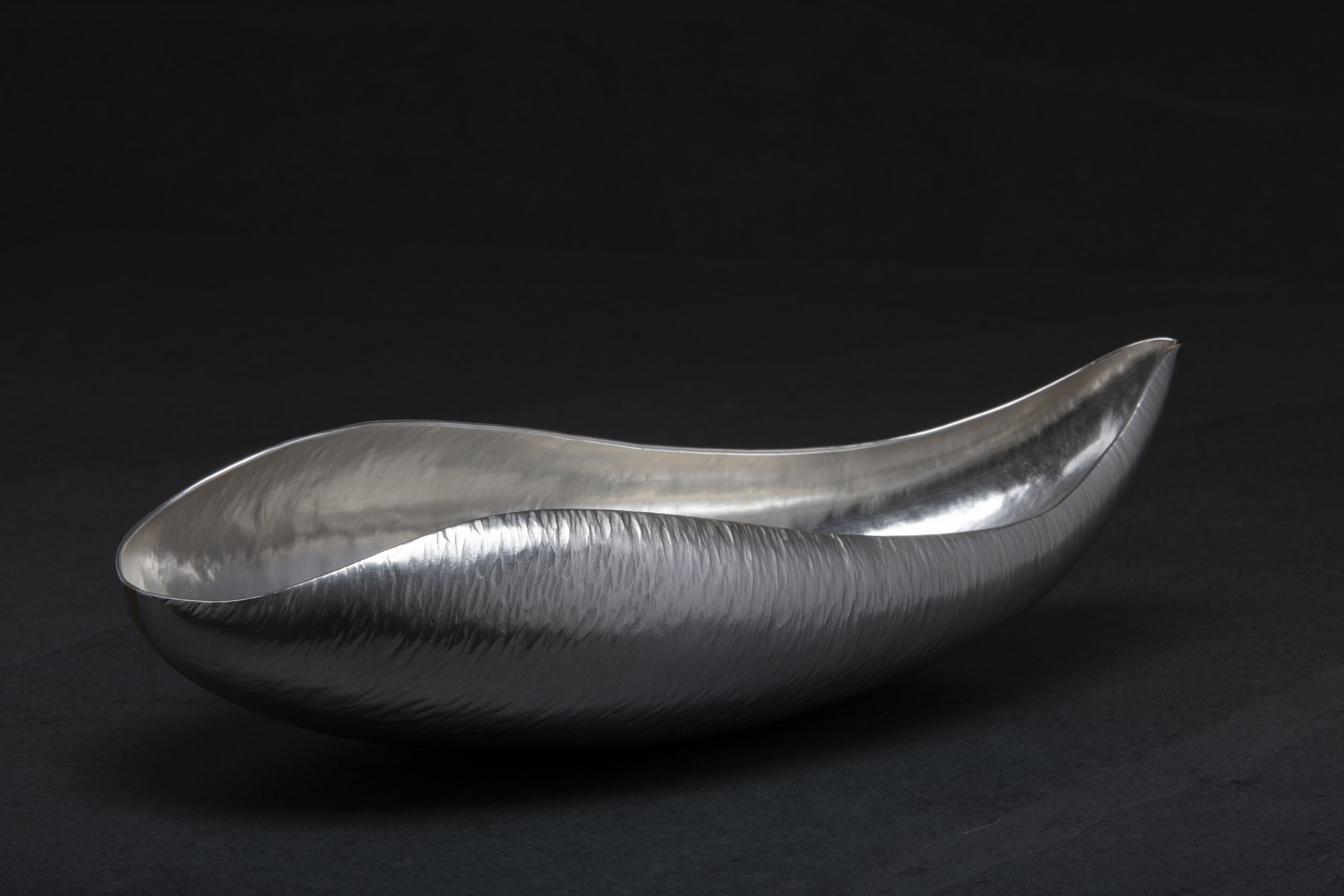
looking after your silver
cleaning tips
The easiest way to keep your contemporary silver clean is simply to use it regularly! Keeping your silver in a cupboard or storage bag* between uses also greatly reduces the rate at which tarnishing can occur and protects the object from small knocks!
* Except for large scale centrepieces, all deliveries from Craftmasters include a special anti tarnish storage bag.
There is much disagreement about cleaning silver, and advice can vary depending on source, as does what is the most attractive level of oxidisation - some people like their silver to gleam fiercely, others prefer a level of patination - this is very much a personal choice with no right answer!
It is important to note all cleaning methods to a greater or lesser degree affect the surface of your objects - but with care this should not be visible over your lifetime.
Many of our makers are happy to clean their work annually F.O.C - this is also a great opportunity to catch up and discover what new projects they are working on!
Here we suggest three simple ways to clean your silver - for more in-depth instructions watch our “how to videos” below.
Silver Foam
Any cleaning which involves rubbing the surface of your silver needs to be approached with caution as over many years you may alter the surface of the object, possibly removing surface detail or finish. However this technique is what most silversmiths use routinely. Foam is lighter option than regular silver polish. Simply rub a small amount over the object with the sponge included and wash the foam off in warm soapy water before drying with a soft cloth to prevent a build up of residue in crevices or detail.
Our preference is for Town Talk Silver Foam which is also available in most Waitrose stores.
Electrolytic plate
Unless the tarnish is very heavy, this is my preferred way of cleaning - not least because it involves very little effort! This method uses an aluminium plate submerged in boiling water and washing soda - all you need to do is submerge the objects in the water and watch the oxidisation lift off! Wash immediately afterwards in warm soapy water and dry with a soft cloth. This technique avoids the build up of polish residue and is excellent for maintaining surface decoration as there is no need to rub the surface. This is a reliable technique for delicate ‘frosted’ finishes.
Please note: items which include oxidisation, mokume gane or keum-boo are not suitable for this technique!
Brushing
In museums, this is the preferred way to keep silver clean. By lightly flicking the surface of the silver object, tarnish may be gently removed. To do this, one needs to take great care not to knock the object with the handle of the brush, and the brush itself must be of the softest goat hair. This technique is helpful in maintaining lustre, but will not remove heavy tarnish.
